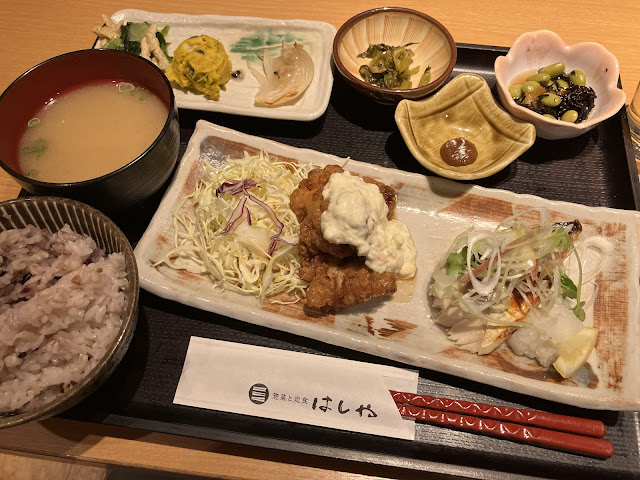Saturday, April 20, 2024
Kibitsu Jinja or Kibitsu Shrine (Bitchū) is a National Treasure. This Shinto shrine is located in the foothills of some mountains on the western side of Okayama. We took a local train to Kibitsu and arrived in about 30 minutes, and a 15- to 20-minute walk brought us to the shrine.
First, we climbed a lot of stairs.
At the top of the stairs we found ourselves in a courtyard, surrounded by several buildings. We were pretty far off the beaten tourist-track here, and there was not much in the way of English signage. We didn’t always understand what we saw.
We observed a number of family groups with infants in the courtyard. They appeared to be involved in some sort of photo shoot to commemorate a special occasion. Perhaps it was a baby-naming or some kind of blessing for the baby.
 |
| The main sanctuary, on the left |
 |
| Another view of the main hall |
This beautiful building (below) was located across from the main sanctuary. There seemed to be more activity here. People came in and out, and occasionally a priest would go in. On the side of the building there was a soothing water feature. We sat nearby for a while, enjoying our surroundings and people-watching.
A trail behind the rocks and bushes led to a steep rough path up the mountainside.
An elegant cloister extended 400 meters from the sanctuary, passing alongside a garden and ending at another shrine (which we did not see) where a priest tells someone’s fortune based on the sound made by a large pot.
An ancient burial mound located on the shrine’s hilly property is believed to have been built in the latter half of the 6th century (CE, I assume). We did not know where it was, so we didn’t have a chance to see it. (No English signs, no maps for visitors.)
It is said that the Momotarō tale originated at Kibitsu Jinja. The legend may have been based on a local story about Kibitsuhiko-no-mikoto, a divine character who fought and defeated an ogre named Ura. We received a fun booklet about Kibitsuhiko and Ura at the Visitor’s Center in Okayama. The cover has masks that a child can cut out and wear, or turn into a postcard. The face of Kibitsuhiko/Momotarō looks more like Queen Esther to me, and Ura looks like a Viking.


 |
| Translation: Japanese heritage, Momotarō legend, Okayama City, Fire hydrant |
 |
Same translation as above. Note the peaches on Momotarō’s arrows.
At dinner time, the adventure continued. Ken ordered grilled beef. It arrived still sizzling on a metal plate on top of a box, with brown ppaper wrapped around it - and many side dishes.I had Japanese-style fried chicken with many coondments and sides. It was fun t try all of those mysterious little dishes.
|
Today’s fabric is denim. A lot of denim is dyed, woven, and made into jeans, jackets, and other trendy items right here in the Okayama Prefecture. Momotaro Jeans are considered top quality and top of the line.



















Great spot!! Good for you to get off the tourist trail! Beautiful. Becky
ReplyDeleteI love the manhole covers and the peaceful la escape.
ReplyDeleteLandscape not escape
ReplyDelete